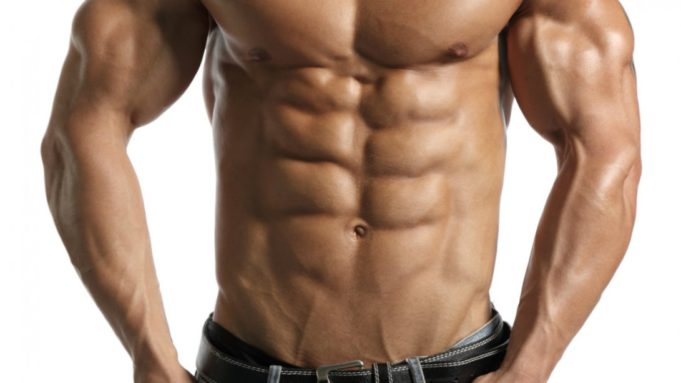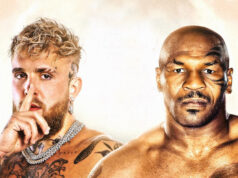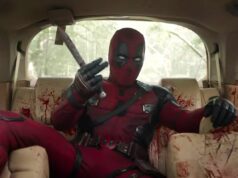Asked to picture the perfect male body, you would probably think of someone lean with a six pack and toned abs. Say, Brad Pitt in Fight Club?
But if you were asked to picture the perfect male body in 1490, you might have thought of something very different. Luckily, Leonardo da Vinci put the 15th Century perfect body down on paper for us. He’s called Vitruvian Man and he stands as the blueprint for perfect human proportion.
He was originally conceived by ancient Roman architect Vitruvius, who wrote in his treatise De Architectura, “For if a man be placed flat on his back, with his hands and feet extended, and a pair of compasses centered at his navel, the fingers and toes of his two hands and feet will touch the circumference of a circle described therefrom.” The mathematical principle for this drawing derives from the golden ratio, making da Vinci’s Vitruvian Man both the perfect human and scientific specimen.
Yet, for all his foresight, da Vinci had never seen Fight Club. He did not think that men would strive not to meet the perfect Vitruvian form, but to match the fashionable ideal male body image of the day.
The 21st Century is an age where perfectly sculpted, toned and proportioned bods symbolise the modern gentleman, and fitness and food coaches reign supreme. Such is the desire to inhabit the body of Adonis that somewhat radical procedures like liposuction and face/neck lifts, and limb lengthening surgery are gaining popularity among males, young and old.
But it hasn’t always been that way. Here is a timeline of how perfect male bodies were perceived throughout the ages.
The 19th Century and the wide waist
In the mid-19th Century, having a generous stomach served as a status symbol, a sign of being able to afford plenty of good food. Men prized rolls of fat around their middle, as a tubby frame was linked with a higher economic status.
Such was the popularity of building up big bodies that in 1866, a Fat Man’s Club was founded in Connecticut for members who weighed at least 200lb. More followed. The fat men’s clubs of the late 19th and early 20th centuries were spectacular celebrations of the wealth and chubbiness of a bygone era. Both sociological and anthropological curiosities, these clubs were a vestige of perhaps the last time society found corpulence to be worthy of celebration.
But by the turn of the century, clubs began to close their doors as the high social status linked to excess weight began to change. The emphasis shifted among the middle and upper classes towards prudence and moderation, and weight was no longer seen as a sign of wealth, but slovenliness.
Interwar assertion of masculine hegemony
Much of Western Europe recovered from the First World War to find traditional conceptions of masculinity had been warped by the military experience. Concern over the prolonged physical deterioration of the male body acquired an added urgency.
Mediated by social ideologies of gender as corporeal ‘fact’, the body became the battleground for the policing of boundaries between men and women, and scholars have since argued for a new politics of sexual difference in the body.
The UK’s ‘Health and Strength’ magazine wrote that men must “strive for Greek stature” while ‘Superman’ magazine’s rendering of a distinctly masculine body beautiful played upon classical imagery of the Greek warrior race. This derived from iconography of celebrated “father” of the physical culture movement Eugen Sandow, who was commonly photographed wearing a leopard skin or figleaf.
The slim counterculture figure of the 1960s
Just 30 years later, the male ideal had changed again, and the traditionally masculine body shape had morphed into a thin young man, who was the embodiment of the American counterculture. Jack Kerouac’s Dean Moriarty embodied the counterculture of the Beat Generation, and the likes of Bob Dylan, Andy Warhol and John Lennon made this new man real.
Lynne Luciano, the author of Looking Good, Male Body Image In Modern America, writes: “Members of the counterculture were often the highly educated children of the prosperous and influential middle class… With their attention focused on protest, social change, and discovering their inner beings, young men appeared to care little about fitness or body image.
“They didn’t work out, they were fond of drugs, and many seemed unacquainted with the notion of a comb.”
1980s bulked-up bodies
By the 1980s, the male ideal had swung back to a more bulked up look, but was rarely idealised in traditional art forms. Instead, bodybuilding hit the media mainstream as action heroes like Arnold Schwarzenegger, Sylvester Stallone and Jean-Claude Van Damme frequently sported huge bulging muscles in a series of Hollywood blockbusters including the Rambo films and the Terminator franchise.
This is commonly attributed to the rising popularity of health clubs and working out, while the vogue for skin-tight clothing that accentuated the frame also drove the ‘body beautiful’ movement. But there’s some speculation that the growing awareness around the male body may be a reaction to the feminist movement and its impact on initiating the slowly growing equality of the sexes in the workforce.
In The Adonis Complex, Harrison G. Pope discusses the dilemma that results when masculine behavioral expectations meet society’s increasing fixation on the male body. He says: “Muscles are one of the few areas in which men can still clearly distinguish themselves from women or feel more powerful than other men. But muscles are a tenuous foundation on which to base all of one’s sense of masculinity and self-esteem”.
21st Century toning
The look these days is ever more slim-cut, symmetrically proportioned and toned, with science forming an ever greater basis for modern conceptions of the idealised male physique. Society has put together an image of what men should and shouldn’t look like, hinging on Western Society’s increasing objectification of the male body.
A Body Image Survey released in 2014 found that men worry about their appearance more than they worry about their health, their family, their relationships or their professional success. Further, today’s young men are more worried about chest muscle mass than are young women about breast size. They’re meanwhile much less likely to seek help in addressing body-related obsessions and dysmorphia.
Whether or not Da Vinci’s Vitruvian Man has come back around remains to be seen, but what is clear is that young men today are more concerned about body image than ever before. There’s hope, though, as male aesthetic culture is being increasingly challenged to liberate the male body from society’s dictates. Maybe Vitruvian Men and Fat Clubs will soon coexist with equal reverence.














